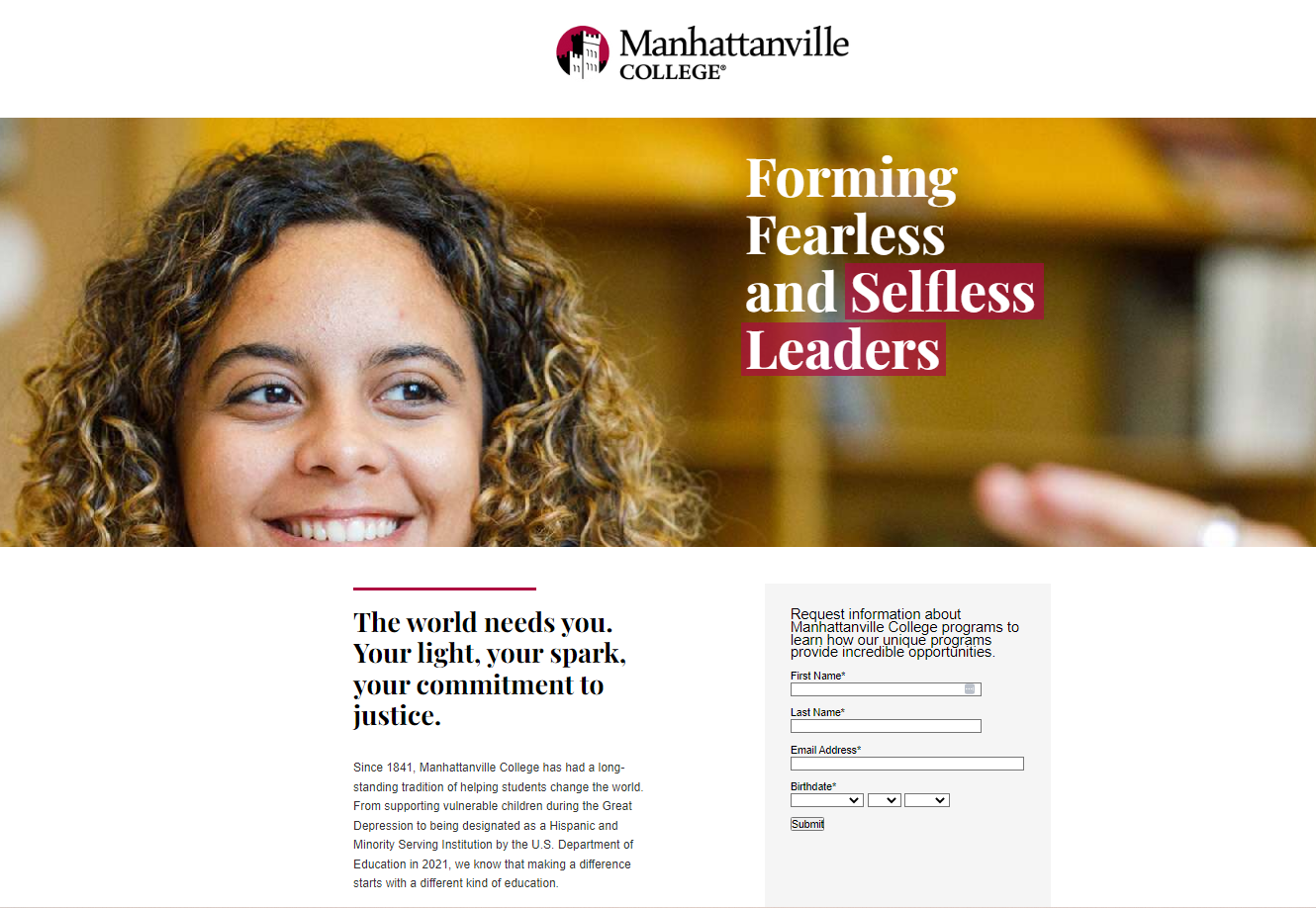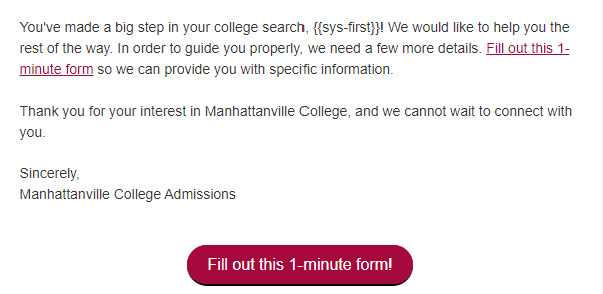 May 24, 2023
Persona
May 24, 2023
Persona
If you’re like us, you’re always looking for ways to capture leads more effectively for your college or university and improve the performance of your digital ad campaigns. Here are some things we’ve learned about lead generation utilizing Slate request for information forms!
1. Shorten your landing page RFI forms
Speaking from experience, we know the simpler your landing page is, the better it performs. Your prospects simply don’t have time to sift through lots of information to get what they’re after, so it’s best to keep it short when it comes to copy.
The same is true for your request for information (RFI) forms. You don’t want to overwhelm your prospects with too many questions upfront and risk turning them off your institution. Therefore, you should keep your RFI forms as short as possible and place them “above the fold”—in the top section that users see first—on your digital landing pages. To prevent coming off as too prying too soon, we recommend including no more than three fields here—like name, birthdate, and email, for example.

You might say, “That’s not enough information!” And you’d be right. But remember, marketing is often about the long game. A prospect’s name, birthdate, and email are all you need to place them in a well-tailored and personalized communications funnel—which is exactly what you need if you want to increase engagement and conversion rates!
2. Start using Slate form communications
Slate form communications can streamline your lead capture process while keeping your landing page RFI form as short as possible. By building a second, more robust RFI into your follow-up email, you can:
- Build trust with your prospects by not asking them for sensitive information up front
- Give your prospects a sense of control by asking for additional details but allowing them to decline
- Segment your audiences and personalize future communications around what you learn about them
At this stage, you should explain why your school is asking for additional information and what benefits students will receive in return for sharing it. Also, reassure prospective students that the second RFI form is short and will only take up a little of their time. Keep your promise by prioritizing Yes/No questions here and in other RFIs.

3. Strategies for success with Slate forms
Using Slate forms this way will help you gradually retrieve info from your prospects while fostering a sense of mutual benefit and trust with potential students, increasing the likelihood of conversion. Here are some other, more technical things to get you started.
- To effectively track student conversions throughout the funnel, you will need to use reports and sources or UTM parameters that report on performance and conversions for specific groups.
- By appending a Person-GUID, you can pre-populate any information you already have—such as email address, first name, last name, and entry term—to streamline communications for the prospect.
- You should utilize Origin Sources to accurately identify the first and last sources for your leads. Take time to set up a First Source group and assess the touchpoints you want to configure as sources, including key forms or form folders.
- You can use hidden form fields to add fields that will not change (e.g., student type and entry term if you’re only serving to first-year FA23 students).
Remember, by taking these steps now, you will capture the necessary data while building strong relationships with your prospective students.
Still have questions? Learn more about Carnegie’s Slate CRM Optimization service or start a conversation with us!
This blog was brought to you by Lexi Alm, Senior Account Manager from Carnegie’s Digital Marketing team, and Emily Parker, Slate Communications Strategist from Carnegie’s Slate Optimization team.
